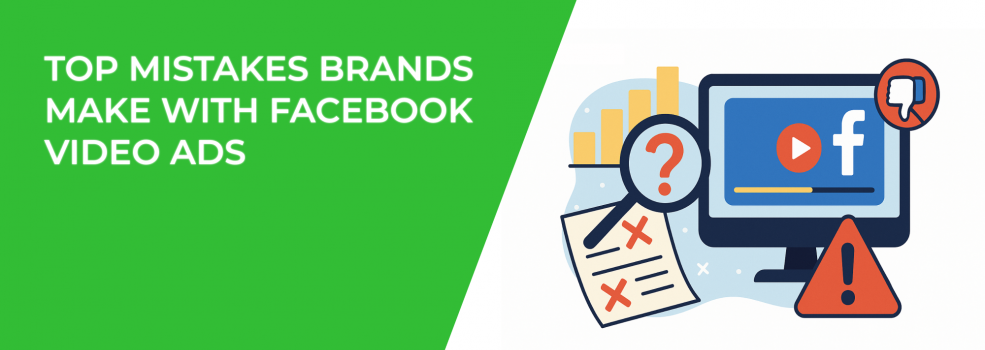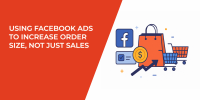Facebook video ads are powerful. They grab attention, tell stories quickly, and can turn casual scrollers into loyal customers. But while the potential is huge, many brands stumble into the same traps that drain their budgets and leave them frustrated.
Some mistakes are obvious, others are subtle — but all of them can quietly sabotage performance. Let’s walk through the most common ones and explore how to avoid them.
1. Making Videos Too Long
Viewers rarely have the patience to sit through a three-minute product pitch. On Facebook, attention spans are short and competition is endless. If you can’t deliver your message quickly, you risk losing people before they even understand what you’re offering.
Here’s how to keep your videos tight and effective:
-
Hook viewers in the first three seconds.
-
Keep the overall length under 30 seconds.
-
Save longer explainers for retargeting campaigns.
By trimming down and respecting the user’s time, you’ll not only increase watch time but also improve ad relevance scores, which can help lower costs.
2. Weak or Slow Hooks
If your video starts with a logo animation or a vague intro, you’ve already lost most viewers. The opening moment is everything. It’s the storefront window that decides whether someone will stop or keep walking.
Stronger alternatives include:
-
Asking a thought-provoking question.
-
Showing the problem your product solves.
-
Using a bold or unexpected visual.
Leading with impact ensures that people don’t scroll away before you’ve had the chance to explain your offer.
A strong opening isn’t optional. In fact, Facebook’s own algorithm rewards ads that grab attention fast. If you want to understand why this works, read our breakdown on the psychology of Facebook ads.
3. Forgetting the Sound-Off Experience
A large percentage of Facebook users watch videos without sound. If your ad relies only on voiceover, the message is gone before it’s even heard.
To solve this, focus on:
-
Adding captions for clarity.
-
Designing visuals that tell the story on their own.
-
Highlighting key points with short, readable text.
The result is a video that works equally well with or without sound, giving it more chances to connect with your audience.
4. Designing for Desktop, Not Mobile
Most video views happen on mobile devices. Yet some brands still create ads that are optimized for wide desktop screens, with tiny text and visuals that lose their impact when shrunk.
A mobile-first approach means:
-
Choosing square or vertical formats.
-
Using larger fonts and bold visuals.
-
Previewing your ads on a smartphone before publishing.
When your video looks great on mobile, it automatically performs better in the environments where people are actually watching.
5. Overloading With Text
Text can support your message, but too much of it turns your video into a messy slideshow. People won’t bother reading if every frame is cluttered.
A better balance is to:
-
Stick to one clear message per scene.
-
Use text sparingly to reinforce visuals.
-
Let the imagery carry the story forward.
This keeps your ad easy to follow and more visually appealing, which boosts engagement.
6. No Clear Call to Action
Even the most creative video is wasted if you don’t guide viewers on what to do next. Many brands stop at storytelling and forget the final push.
To strengthen your CTA, try:
-
Adding it in the last few seconds of the video.
-
Reinforcing it with Facebook’s native CTA button.
-
Testing different variations to see which one converts best.
A clear call to action ensures your ads don’t just entertain — they drive measurable results.
7. Targeting Too Broadly
Good creative won’t help if it reaches the wrong audience. Casting too wide a net often leads to wasted spend and poor engagement.
Smarter targeting approaches include:
-
Retargeting video viewers with product ads.
-
Building lookalike audiences from existing customers.
-
Layering interests and behaviors to refine reach.
When your video is shown to people who actually care, your conversion rates naturally climb.
Broad targeting often wastes spend. To avoid that, revisit the basics in our guide to Facebook ad targeting 101 or dive into how to use Facebook detailed targeting for micro-niche audiences.
8. Tracking Vanity Metrics
Likes and shares may look impressive, but they don’t always move the needle. Focusing only on surface-level engagement can mislead your strategy.
Instead, measure:
-
Cost per conversion.
-
Video completion rates.
-
Click-through rates on your CTA.
By tracking numbers that tie directly to goals, you’ll know whether your ads are driving business value, not just attention.
It’s tempting to obsess over likes and views, but smarter marketers measure what drives conversions. To sharpen your approach, check out our article on how to analyze Facebook ad performance beyond CTR and CPC.
9. Reusing the Same Video Everywhere
It’s tempting to upload one video across Facebook, Instagram, TikTok, and YouTube. But users interact with each platform differently. What works on YouTube may flop on Facebook.
On Facebook, prioritize:
-
Quick storytelling that makes sense instantly.
-
Native-feeling videos that blend into the feed.
-
Multiple versions to test instead of one “universal” ad.
Tailoring creative to the platform shows respect for the audience’s habits and maximizes effectiveness.
10. Neglecting the Thumbnail
The thumbnail acts like a movie poster — it’s what convinces people to stop and watch. A boring, blurry, or text-heavy frame will sink your ad before it starts.
To improve thumbnails:
-
Choose a frame that sparks curiosity.
-
Avoid cluttered or generic images.
-
Test custom thumbnails against auto-generated ones.
Strong thumbnails boost your play rate and give your ads a stronger starting point.
11. Ignoring Frequency Fatigue
Running the same video for months can cause audiences to tune it out. What once grabbed attention becomes invisible over time.
Avoid fatigue by:
-
Refreshing creative every few weeks.
-
Rotating different ad variations.
-
Monitoring frequency — if it’s high but engagement is dropping, it’s time to swap in new content.
Showing the same ad too many times can kill results fast. If you’ve noticed engagement dropping, you may be dealing with ad fatigue. Here’s how to spot it early and fix it.
12. Forgetting the Funnel
Not every viewer is ready to buy. Treating all audiences the same — pushing cold users straight into sales offers — is a common and costly mistake.
A funnel-based approach looks like this:
-
Awareness: short, attention-grabbing videos.
-
Consideration: testimonials or product demos.
-
Conversion: offers and retargeting ads.
Building your campaigns around the funnel keeps your messaging aligned with where the customer is in their journey.
Final Thoughts
Facebook video ads can deliver incredible ROI, but only if you avoid these mistakes. From creative missteps like weak hooks and overloaded text to strategic errors like poor targeting and ignoring the funnel, each one chips away at your results.
The good news? Every mistake is fixable. With tighter videos, mobile-first design, clear CTAs, and smarter targeting, you can turn your ads from budget-drainers into growth drivers.

